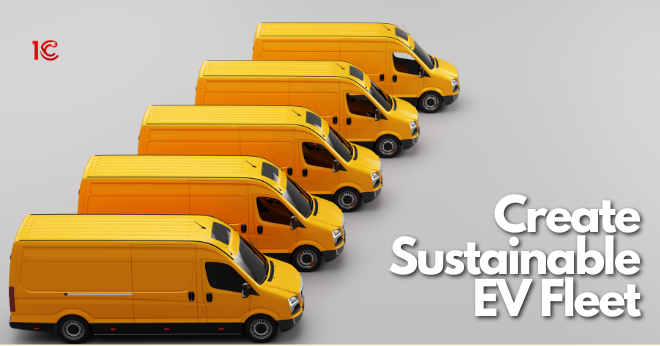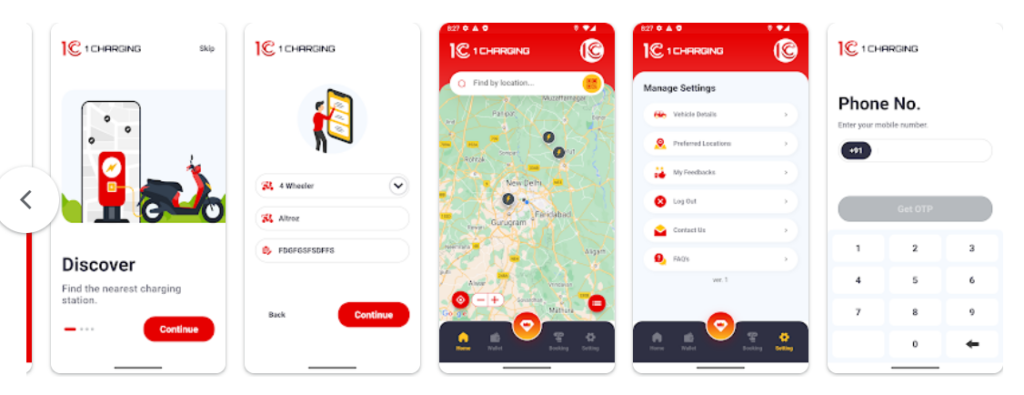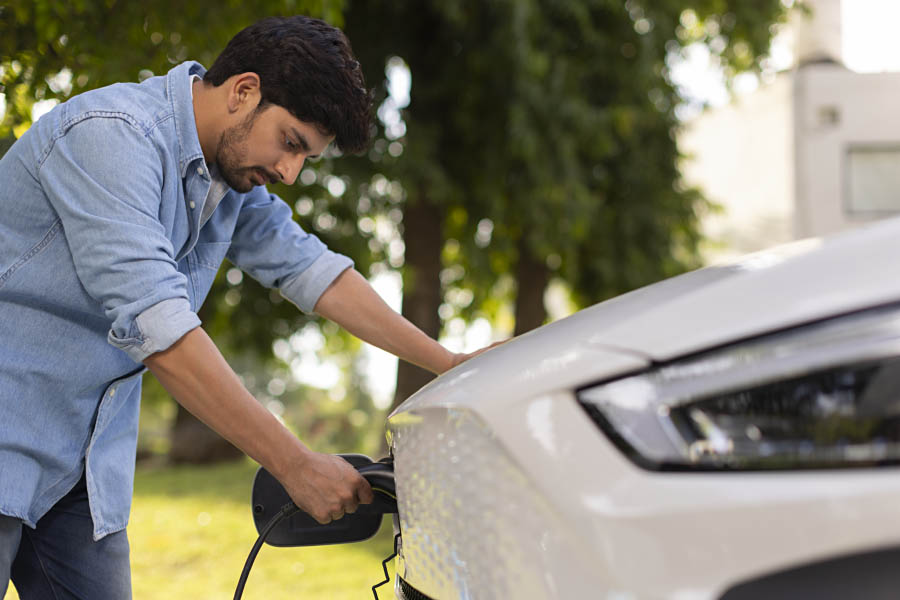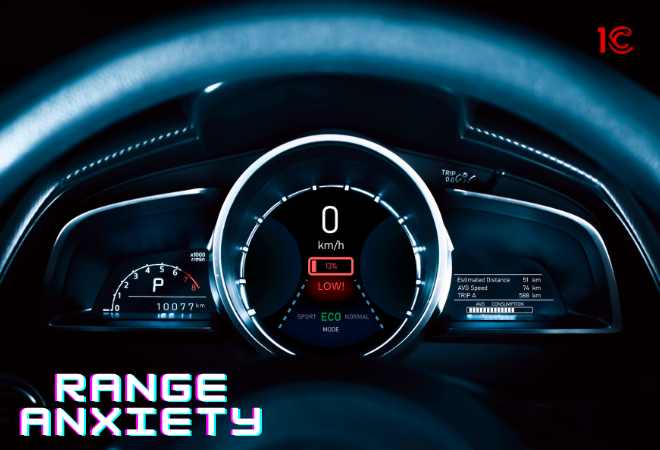
Tips for Creating a Sustainable EV Fleet
Electric vehicles represent the future, and businesses must adapt for long-term sustainability. Companies with vehicle fleets should explore replacing conventional vehicles with electric ones to reduce their carbon footprint. Transitioning to EVs offers various advantages, including emission reduction and decreased operational expenses. However, before embracing electric-powered vehicles, careful considerations must be made. Here are a few tips to ponder when establishing a sustainable EV fleet.
Planning to set up a Charging station?
Connect with 1C for expert advice on EV chargers
1. Total Cost of Ownership
While the initial cost of purchasing an EV may exceed that of a gasoline vehicle, it’s important for customers to evaluate the total cost of ownership. In the long term, EVs incur lower operating and maintenance expenses than conventional vehicles, primarily due to the cheaper cost of electricity than gasoline. This cost reduction is attributed to EVs having fewer mechanical components and fluids requiring maintenance. Additionally, EVs feature regenerative braking systems that prolong the lifespan of brake pads, and their electric powertrain eliminates the need for oil changes, a standard maintenance task for gasoline vehicles.
2. Understand the Range Needs
When buying electric cars, it’s important to think about range anxiety. Range refers to how far an EV can go before needing to charge. Nowadays, EVs can cover distances that most drivers and businesses need. With lots of EV models available, customers should ensure the cars they’re looking at can travel far enough for their needs. Many EVs can go over 300 miles on a single charge, which should meet almost everyone’s travel needs.
Planning to set up a Charging station?
Connect with 1C for expert advice on EV chargers
3. Charging Infrastructure
Investing in charging infrastructure is necessary to accommodate the daily charging needs of an electric fleet. The infrastructure should be tailored to the logistics of the business and strategically placed to ensure convenient access for EV drivers, enabling them to stay on the road efficiently. Charging stations can be installed in employee parking lots and commercial areas. Additionally, businesses should consider deploying fast chargers along key routes to support continuous daily vehicle operation.

Download our 1C EV Charging Station Locator App Today!
One Stop Solution is to find a verified charging station nearby.

4. Calculate Savings
Although the initial cost of purchasing an EV may be higher than that of a conventional car, customers need to weigh the long-term savings. Electric vehicles boast notably reduced operating costs, as electricity prices are generally lower than gasoline, and maintenance expenses are typically lower than those of conventional vehicles. Customers should assess the cost per mile of their current fossil fuel vehicle and the potential cost savings associated with transitioning to an EV-based fleet. Additionally, customers may benefit from incentives such as state and federal government grants to promote sustainable fleet adoption.
5. Understand When to Buy
EV technology continually advances, enhancing range, efficiency, and overall technology. Periodically updating your EV fleet to newer models with improved technology can offer benefits. It’s advisable to consider waiting for advancements in battery technology, which can help alleviate concerns about range anxiety. With the anticipated growth in demand for EVs, the market is expected to become more mainstream, leading to increased supply and potentially more competitive pricing.
How 1C EV Charging Supports in Creating a Sustainable EV Fleet
1C EV Charging supports businesses in creating sustainable EV fleets by providing tailored solutions for total cost of ownership analysis, charging infrastructure planning, and fast charger deployment. We also offer guidance on accessing financial incentives and staying updated on advancements in EV technology. Transitioning to a sustainable EV fleet with 1C is a smart investment for businesses looking to reduce their carbon footprint and lower operating expenses. Contact us today to learn more and take the first step towards a greener future!

Conclusion
Creating a sustainable EV fleet involves careful planning and consideration of various factors. While transitioning to electric vehicles may involve upfront costs, the long-term benefits of reduced emissions, lower operating expenses, and potential savings make it a worthwhile investment for businesses. Businesses can effectively transition towards a more sustainable and environmentally friendly fleet by understanding the total cost of ownership, range needs, charging infrastructure requirements, potential savings, and timing for purchasing EVs.







